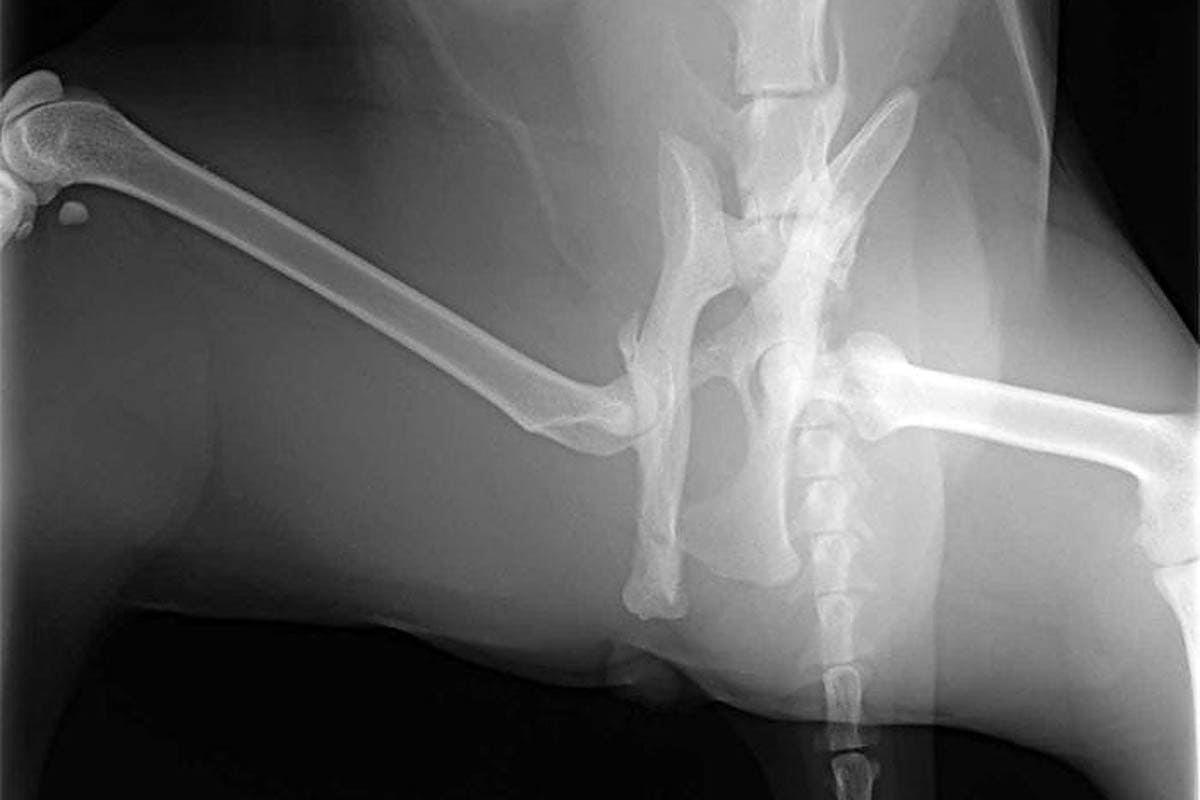The pelvis is a ring-like structure of bones located at the lower end of the trunk which consists of two halves, each one contains three bones, the ilium, ischium, and pubis.
Pelvic fractures are seen most frequently in young and healthy cats and are typically the result of significant trauma from an automobile accident or fall from a height. Internal injuries are common in cats with a broken pelvis, which can affect the urinary tract, thorax or nerve damage.
Symptoms
- The cat or may not be able to walk (our cat who received a pelvic fracture was able to run away and hide under a bush)
- Torn and ripped claws
- External wounds and abrasions
- Urinary dysfunction
Any cat with a suspected trauma should see a veterinarian, even if he or she appears well.
Diagnosis
Take extreme care with a cat who has a suspected broken pelvis; the cat as still as possible to prevent further trauma.
The veterinarian will carefully examine the cat and obtain a history from you. It may be possible to feel the break during the physical examination; an x-ray can confirm the diagnosis.
He may also wish to perform chest x-rays to check for internal injuries.
Treatment
Conservative management:
A minor break may be left to heal itself with cage rest and analgesics to manage pain.
Cage rest to minimise movement (we used a dog crate). The cat’s food and water bowls, as well as a comfortable bed and litter tray, will be placed in the cage with the cat. Urinary management until the cat can urinate without assistance. The veterinarian may provide you with physiotherapy exercises to perform on the cat during recovery.
Cats can typically stand on their own within one week.
Medical management:
Major breaks will require surgery under general anesthesia to re-align and stabilise the affected bones. This may include pins, plates, screws or wires.
Once the cat can urinate and defecate on his or her own, it can go home. Our cat was released from the hospital one week after his accident and then placed on cage rest for a further six weeks.
Complications
The pelvis can lead to suboptimal pelvic dimensions in cats treated conservatively, which may cause constipation or dystocia (difficulty giving birth) in affected cats. Arthritis may develop in later years.
Bone infection and nerve damage can occur in cats who have had surgery; however, these are uncommon.
Home care
Regardless of the outcome, your cat will most likely need to be on cage rest for six weeks to allow the pelvis to heal and the bones to fuse. This also has the benefit of preventing your cat from moving around and especially jumping up and down. A large dog crate is perfect for this as it can accommodate the litter tray, food and water bowls and a cat bed.
Make sure you have a low-sided litter tray as moving around may be difficult in the early days. We used the lid from a cardboard box and cut out one side, lined it with a litter tray liner and filled it with litter.
It is vital to keep a close eye on your cat’s toileting habits while he is recovering and ensure he is having frequent bowel movements and urinating. Seek immediate veterinary care if he stops going to the toilet.
Most cats will tolerate cage rest without incident.
Long-term outcome
The outcome for cats with a broken pelvis is generally excellent. Long-term problems may include persistent lameness and arthritis of the hip joint in later years. Our cat has made an almost full recovery, he is a little wobbly at the back end, but it doesn’t appear to have affected him a great deal.
If the injured cat is an entire female, it may be in her best interests to have her spayed as pelvic fractures can lead to a narrowing of the birth canal.
Feature image: Helensburgh Veterinary Clinic/Julia Wilson

